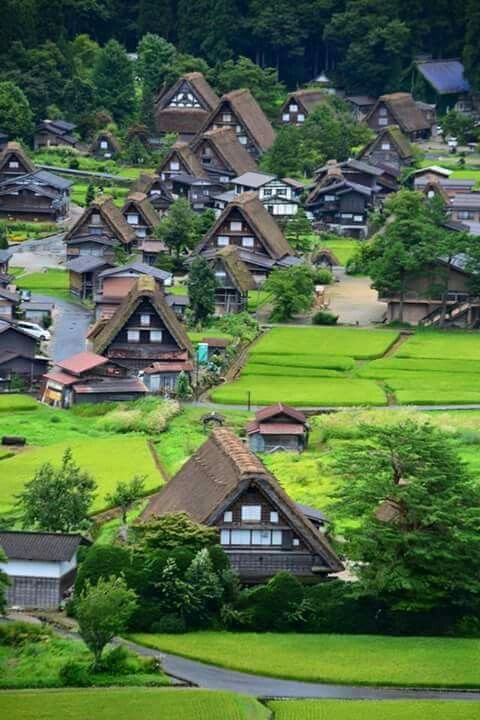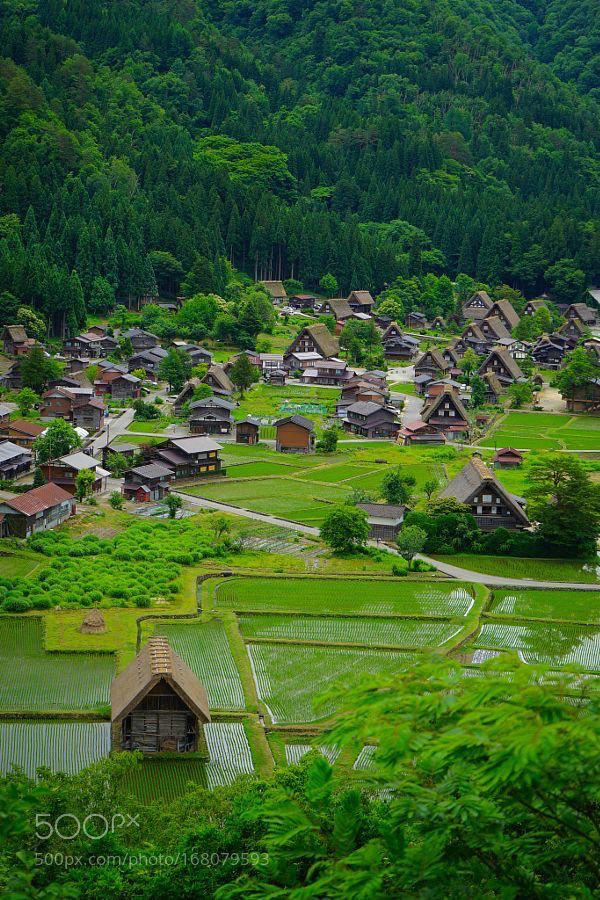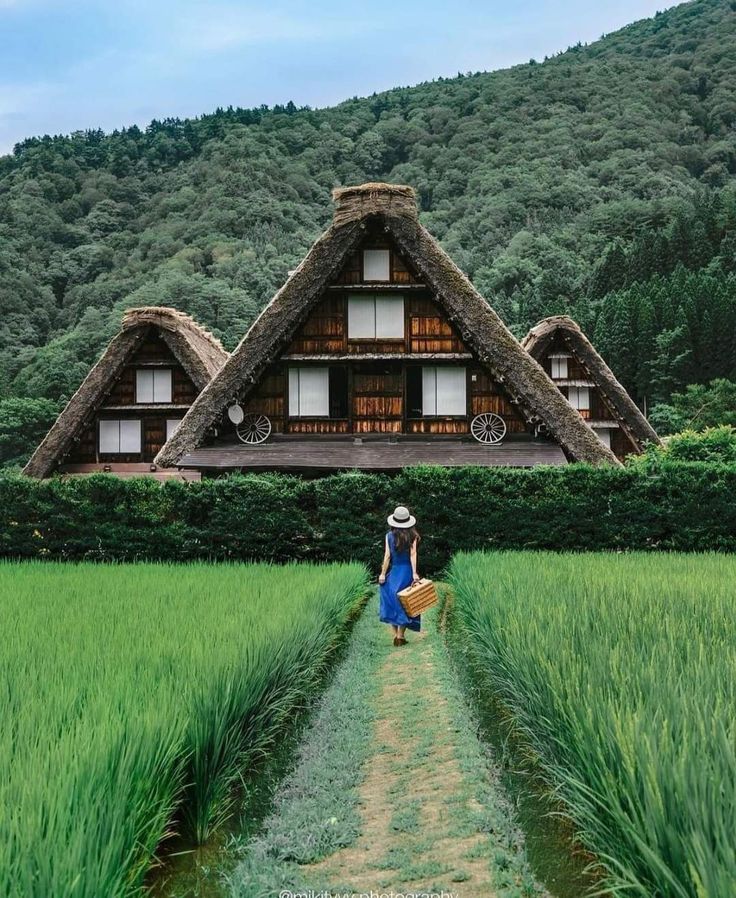
The first snows arrived in Shirakawa-go not with a roar, but with a sigh. Soft, fat flakes drifted from a sky the color of a dove’s wing, settling onto the steep, thatched roofs of the gassho-zukuri farmhouses. Old Kenji, his face a roadmap of eighty winters, watched from the shoji-screened window of his home, the largest in their cluster. The thatch, thick as a man’s torso and meticulously maintained, was already beginning to wear its winter ermine. These roofs, he often told the village children, were like hands clasped in prayer – gassho – reaching towards the heavens, strong enough to bear the weight of the mountain’s temper.
Shirakawa-go, nestled deep within the Gifu Prefecture’s embrace, was more than just a village; it was a living testament to resilience. Declared a UNESCO World Heritage Site, its very existence was a quiet defiance against the relentless march of modernity. Here, time didn’t so much march as meander, guided by the rhythm of seasons and the ancient wisdom passed down through generations.
In winter, the village transformed into a monochrome masterpiece. The world outside was muffled by the deep snow, sometimes piling several meters high. Smoke, smelling of pine and hearth, curled from the chimneys, the only vibrant strokes against the white and grey. Inside Kenji’s home, the irori, the sunken hearth, was the heart. Its glowing embers cast dancing shadows on the soot-blackened wooden beams overhead, warming the vast, open space that extended up into the cathedral-like attic, once used for silkworm cultivation. The steep pitch of the roofs, a marvel of engineering, allowed the heavy snow to slide off, preventing collapse. Life slowed, became more intimate. Villagers, bundled in layers, would trudge through cleared paths, their breath misting, sharing preserved vegetables, tales, and the warmth of community. The Shogawa River, a silver ribbon through the valley, flowed on, its murmur a constant undercurrent to the winter’s hush.
Then, as if a spell were broken, spring would breathe life back into the valley. The snow would melt, feeding the awakening earth. The thatch roofs, now exposed, showed their rich, earthy browns and greys, dotted with mossy greens. Wildflowers – purples, yellows, and whites – would carpet the verges of the rice paddies that began to shimmer with newly planted shoots.
Summer arrived in a blaze of emerald. The surrounding mountains, once stark, were now cloaked in dense, vibrant foliage. The air, thick with the scent of damp earth and blooming hydrangeas, buzzed with the chorus of cicadas. Children, freed from winter’s confines, chased dragonflies along the irrigation channels, their laughter echoing between the ancient farmhouses. Tourists, too, would arrive, cameras clicking, marveling at the architectural ingenuity and the sheer, breathtaking beauty. They’d wander the paths, peering into the preserved houses, trying to imagine the lives lived within these wooden walls.
Hana, Kenji’s granddaughter, had returned from Tokyo for the summer. She’d once found the village stifling, yearning for the city’s bright lights. But now, walking beside her grandfather through the fields, the scent of sun-warmed hay in her nostrils, she felt a profound connection.

“The roofs, Ojii-san,” she said one afternoon, gazing at the Ogimachi Castle Shiroyama Observation Deck, which offered a panoramic view of their cluster of houses, “they still amaze me. How did they know how to build them so strong, so perfectly suited to this land?”
Kenji smiled, his eyes crinkling. “It wasn’t knowing, Hana-chan, so much as listening. Listening to the snow, the wind, the mountain. Our ancestors didn’t fight the land; they learned to dance with it.” He pointed to a team of men working on a distant roof. “And community. The yui system, where everyone helps re-thatch a roof. No single family could do it alone. These houses were built by hands working together, just as the village thrives by hearts working together.”
That summer, Hana learned to appreciate the intricate details she’d once overlooked: the way the sunlight filtered through the high attic windows, illuminating dust motes like tiny stars; the cool, earthy smell inside the gassho-zukuri, a blend of aged wood, tatami, and the faint, lingering aroma of smoke from centuries of hearth fires. She learned about the ingenious wooden joinery that held the massive structures together without nails, allowing them to flex and breathe with the seasons. She saw the pride in the eyes of the villagers as they tended their gardens, repaired their homes, and welcomed visitors with genuine warmth, sharing their heritage not as a museum piece, but as a vibrant, ongoing story.

One evening, as the sun dipped behind the mountains, painting the sky in hues of orange and violet, Hana sat with Kenji on their porch. The frogs had begun their nightly chorus in the rice paddies. The gassho-zukuri houses around them seemed to glow from within, their paper windows like soft lanterns.
“It’s beautiful, isn’t it?” Kenji murmured, more to himself than to her. “UNESCO recognized the buildings, the landscape. But the real heritage, Hana, is the spirit. The spirit of resilience, of community, of living in harmony with nature. That’s what we must truly preserve.”
Hana nodded, a sense of peace settling over her she hadn’t felt in the bustling city. Shirakawa-go wasn’t just a collection of famous farmhouses on a world heritage list. It was a sanctuary, a place where the whispers of the past echoed in the rustle of the thatch, the murmur of the river, and the enduring strength of its praying-hands roofs, a silent promise of continuity against the backdrop of an ever-changing world. And in both the stark white silence of winter and the vibrant green song of summer, its beauty was indeed, stunningly, alive.

